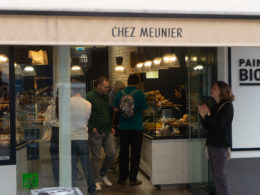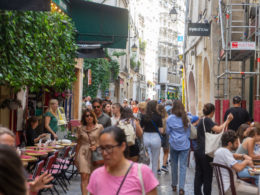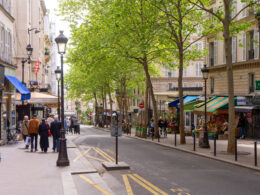If you’re coming to Paris then visiting the city’s parks is a must-do. Green havens from a very busy city, there are so many incredible gems to discover! From the pristine Jardin de Luxembourg on the left bank to the huge Bois de Boulogne to the west of the city, our guide will tell you all about the must-visit parks and woods in the city of light.
Must Visit Parks of Paris
After living in Paris for nearly 8 years, I’ve had the chance to explore the beautiful parks and gardens of Paris. Regardless of the season, there are so many spots to walk, have a picnic and read in these green havens. In this section I’ll walk through my favourite parks and gardens in the city and I’ll tell you why should visit them too!
Parc Monceau
The Parc Monceau is a stunning park in the capital’s very prestigious 8th arrondissement. Around a 10 minute walk from the Champs-Élysées and the Arc de Triomphe, the park is certainly worth a visit if you’re in the area.

The park was founded by Phillippe d’Orléans, who was a cousin of King Louis XVI, in 1778. He used the services of Louis Carrogis Carmontelle, who was a painter and writer, to design the park. The park is slightly unusual as it’s one of the few English gardens in France. There’s also a lot of randomly placed faux monuments, statues and small-scale architectural features. Walk around the park and you’ll find a Dutch inspired windmill, a Pyramid inspired by Ancient Egypt and Neo-classical style pillars surrounding a man-made lake.
Incredibly popular with local families, it’s perfect to go and relax with a book on one of many benches or for a picnic on a warm day.
What to know before you visit
- It’s relatively small – you can cross the park in under 10 minutes
- Open all year round
- There’s a small kiosk in the centre of the park selling drinks, ice cream and snacks
Address: 35 boulevard de Courcelles, 75008
Entrances:
- Boulevard de Courcelles
- Avenue Vélasquez
- Avenue Van Dyck
- Avenue Ruysdael
Parc des Buttes-Chaumont
If you’re in the north of the city, specifically the 19th arrondissement, then the Parc des Buttes-Chaumont is a must-visit! The vast park has a myriad of different ares to explore including a waterfall (yes that’s right), a hidden grotto, a hilltop viewing area and a suspension bridge.
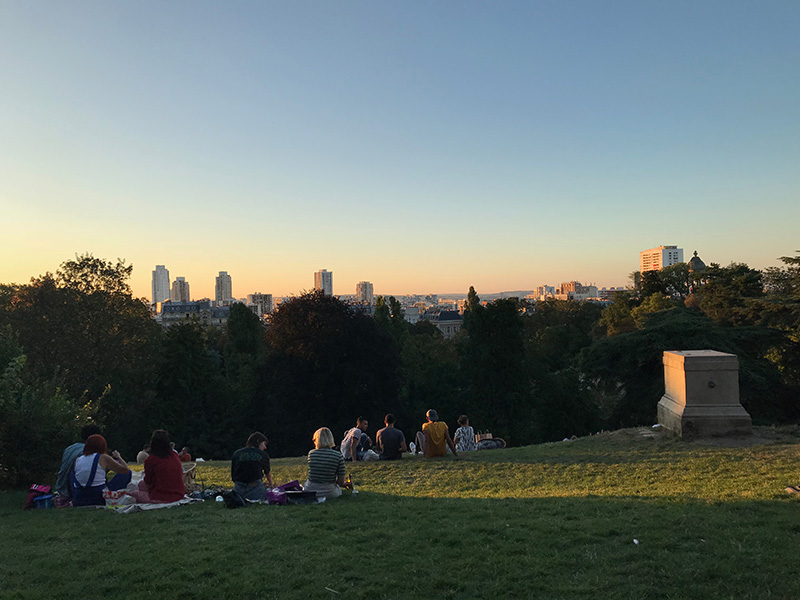
The park was started life as a quarry to build Baron Haussmann’s Paris and after the quarry was exhausted, the site was left abandoned. A few years after Haussman himself decided to transform the wasteland into a park for the now rapidly expanding local population. Construction started in 1864 and took around 3 years with the park opening in 1867 in time for the World Expo.
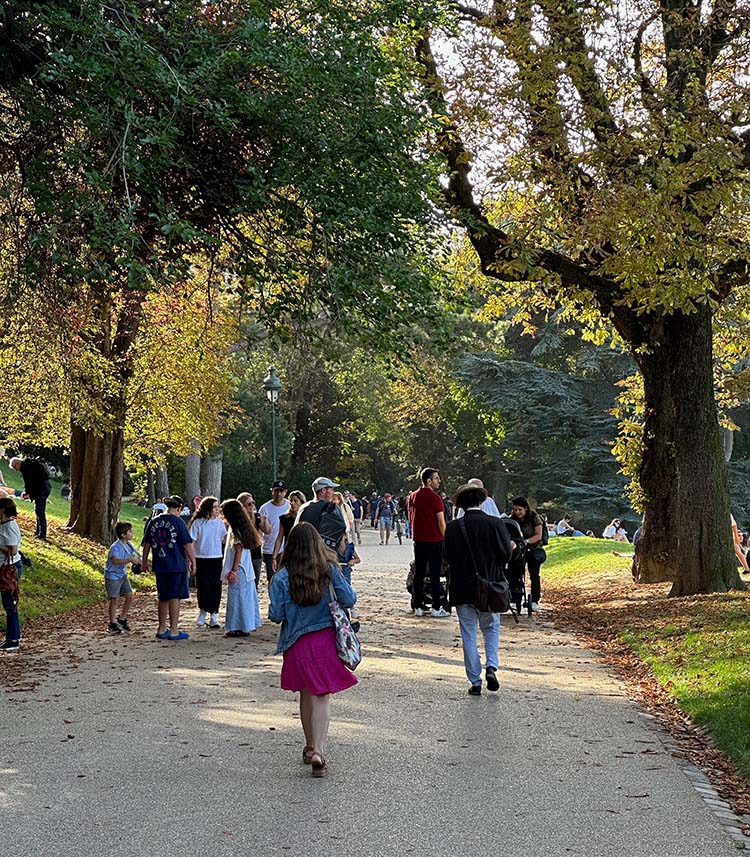
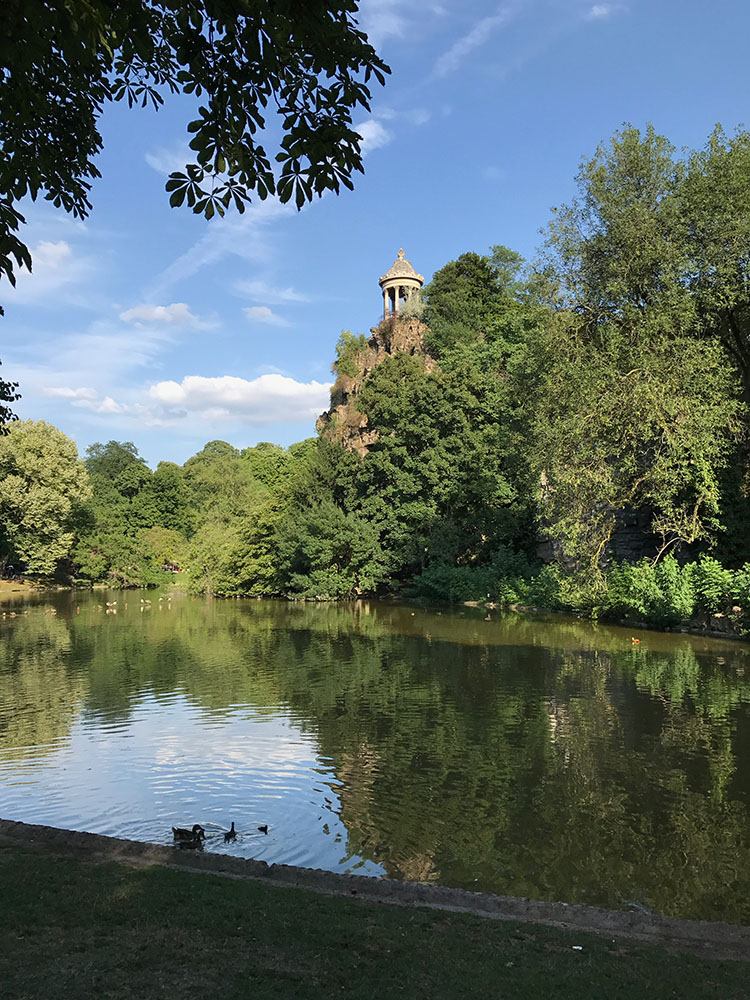
Inside the park you’ll find many man-made features such as a lake with a 50m tall central island featuring a viewing point. You can get to the island via a suspension bridge linking it to the upper hills on the sides of the park. It’s fascinating to walk around the park and the grassy hills are very popular with locals to relax, meet with friends have picnics. I’d recommend going for apéro in the evening and catching a beautiful sunset.
If you want to learn more, read our guide to the Buttes-Chaumont park in Paris.
What to know before you visit
- It’s on the larger side, count on an hour to walk around the park
- Open all year round
- There are several bars and restaurants within the park (click on the guide above to learn more)
Address: Parc des Buttes Chaumont, Place Armand-Carrel, 75019
Entrances:
- 1-7 rue Botzaris
- 2-6b, rue Manin
- 55 rue de Crimée
- 42 avenue Simon-Bolivar (closest entrance from Line 11)
Jardin des Tuileries
The Jardin des Tuileries is a beautiful garden opposite the west side of the Louvre in the 1st arrondissement. The park was first created in 1564 and was designed by Catherine de’ Medici as the garden for the Tuileries Palace. The private gardens were eventually opened to the general public in 1667 after the French Revolution.

The park run non-stop from the Louvre to the Place de la Concorde on the western side. It’s a relatively small park and you can cross it in 10-15 minutes. There’s two large circular ponds on each side of the park with each pond lined with green garden chairs – it’s a great spot to rest after a long walk!

Given its very central location, it’s a popular spot with Parisians to meet and have picnics. You’ll also find the incredible L’Orangerie Museum in the park (which is well worth a visit).
What to know before you visit
- You can cross the park in 10-15 mins
- Open all year round
- There are paid toilets on the western side
- There are a few kiosk/cafés in the middle of the park but they’re quite expensive!
Address: 113, rue de Rivoli, 75001
Parc de Belleville
The Parc de Belleville is on the one of the city’s newest parks and is located in the 20th arrondissement. Despite it only opening in 1988, the park has some very interesting history. The area dates back to the Middle Ages where the land was used for grape vines. Local taverns surrounded the vines and served the local (and not so great) wine which was called Piquette.
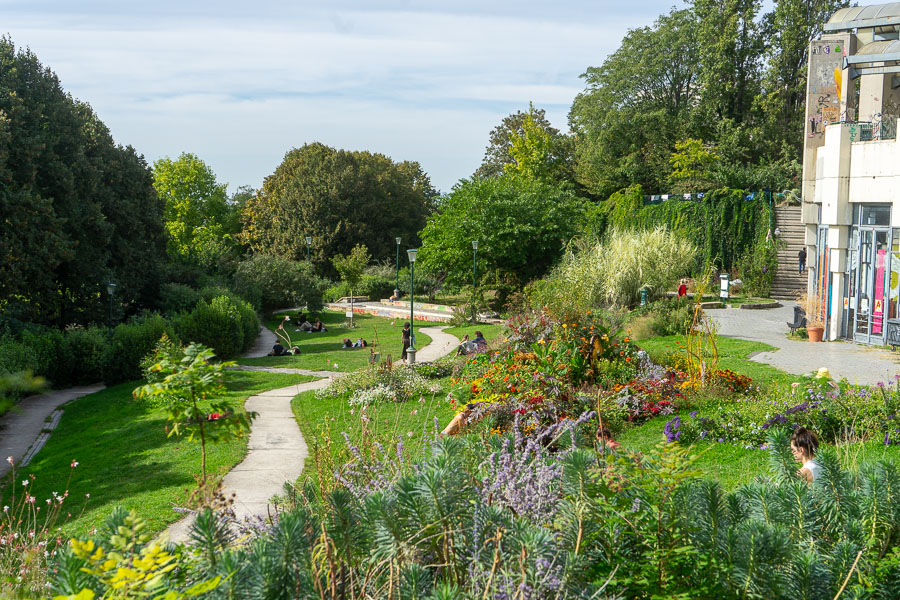
In 1988 the area was renovated and the modern park was built but keeping with history, a small vineyard was kept at the top of the hill. The multilevel park has lots of interesting, hidden areas and is a great place to relax to get away from the nearby busy streets.
At the very top of the hill lies a viewing point which gives views out across the city and to the Eiffel Tower. There’s also a great bar, Moncoeur Belleville, at the top where you can look out across the city with a drink.

To find out more about the area, read our guide to Belleville Paris.
What to know before you visit
- There’s a great viewing point at the top of the park
Address: 47 rue des Couronnes, 75020
Entrances:
- Rue des Couronnes
- Rue Piat
- Rue Julien-Lacroix
- Rue Jouye-Rouve
Jardin du Luxembourg
The Jardin du Luxembourg is another great park to visit and well worth 10 minute walk from the Saint Germain des Prés area of Paris. The historical park dates back to the early 17th century when Marie de’ Medici, the wife of King Henry IV, began construction of the Luxembourg palace. Over the years, different Monarchs sold off parts of the park and the park was reconstructed by Napoleon III in 1865.


Today the park is owned and ran by the French Senate and despite the turbulent history, there are still original features from the 1600s in the park today. The Medici Fountain, which has was moved, is now located on the north-east edge.
The centre of the park has a large pond (the grand bassin) which now is host to a large amount of children’s sailing yachts. On the outskirts of the park there are tennis courts and even a puppet theatre. It’s a fantastic place to relax on one of the many benches and the classic Parisian green garden chairs.
What to know before you visit
- There are no toilets in the park
Address: 2 rue Auguste-Comte, 75006
The Woods (Les Bois) of Paris
There are two very well known woods (les bois) to the east and west of the city centre. These large woods are massive compared to the parks above and require more of a day trip out to them!
Bois de Boulogne
To the west of the city next to the 16th arrondissement lies the Bois de Boulogne. A massive 845 hectares (or 2088 acres) large, the park is over double the size of Central Park in New York and takes over an hour to walk from the southern edge to the northern edge.
The park was part of the ancient Rouvray forest and over the years became a hunting reserve for the Monarchy. When Napoleon Bonaparte was defeated, large parts of the park were deforested by British and Russian troops. In 1852, Napoleon III turned the area into a public park and construction took over 5 years to complete the modern day park.

In the park you’ll find over 7 lakes, a zoo, an amusement park (Jardin d’Acclimatation), a 3 Michelin Star restaurant (Le Pré Catalan), numerous bars and the Louis Vuitton Foundation art museum. It’s absolutely vast and well worth a visit if you’re staying in Paris for an extended amount of time.
Bois de Vincennes
On the other edge of the city (to the east) you’ll find the biggest park in the city, the Bois de Vincennes. The park is around 995 hectares (2459 acres) large and was constructed at just after the Bois de Boulogne in 1855.
The area goes back to Roman times but became a hunting preserve for the monarchy when King Louis VII first built a hunting lodge in 1150. The bois was used by monarchs for hunting for centuries after and it was only in the 18th century when Louis XV opened the park up to the general public.

Within the park there’s numerous lakes, an English garden, a zoo, several restaurants and a velodrome. I’d recommend renting a bike and cycling through the woods – it’s fantastic when you want to get out of the city and have some fresh air. There’s several nice cafés on the small islands in the centre of the man made lake on the western side that are worth going to for refreshments!









